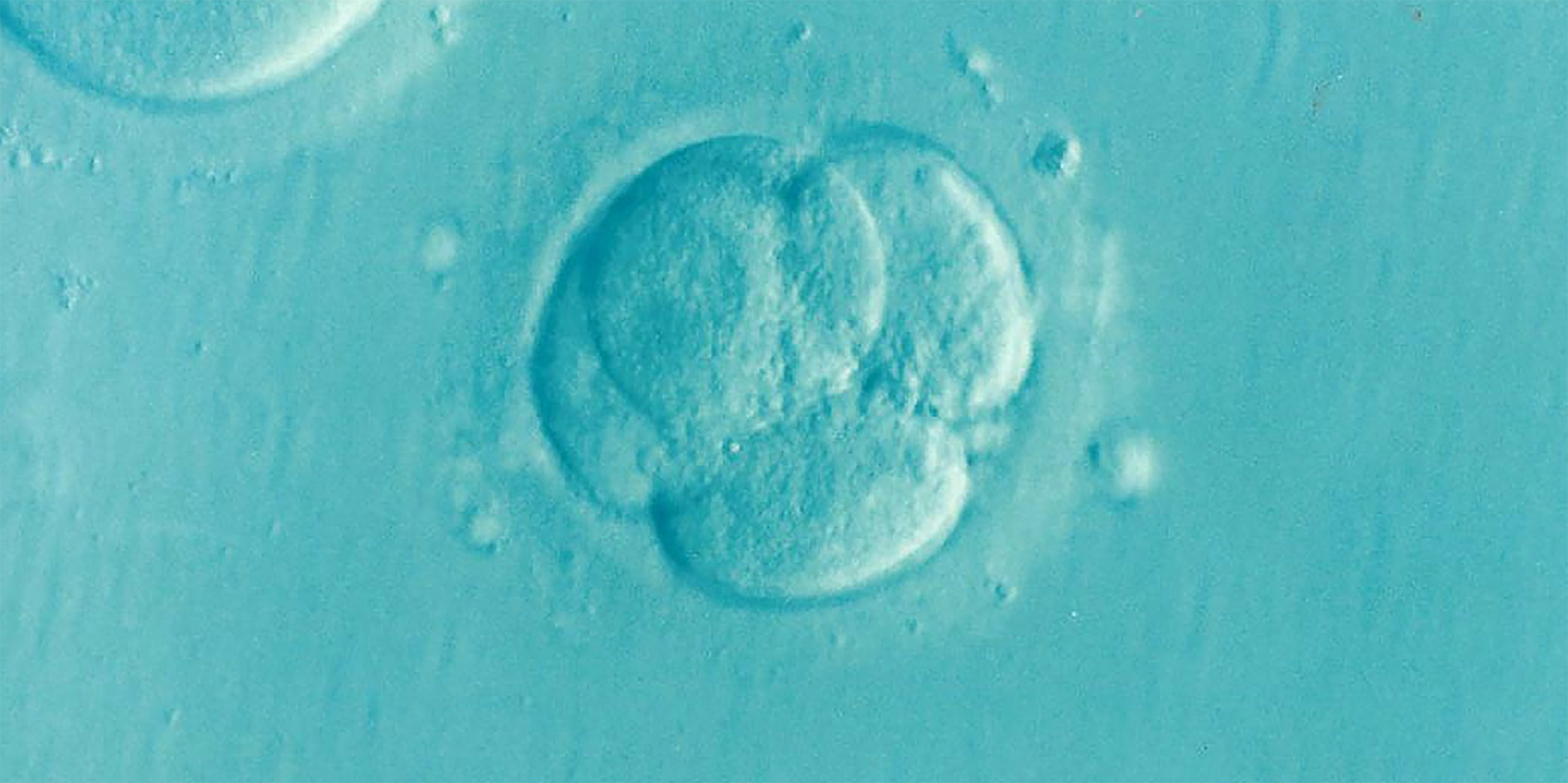Originally published 12 December 1988
I have a colleague, a physicist, who tells his students, “If it’s not simple, it’s not physics.”
He does not mean that physics is easy. He means that physics is the study of things simple enough to be described mathematically. The rotation of a galaxy is simple. The production of energy by a star is simple. The fall of an apple from a tree is simple. The apple is not simple.
Physics is simple; biology is not simple. A single living cell is vastly more intricate than a star. Even the simplest life processes seem miracles to the physicist. And no life process seems more miraculous (to this physicist) than the fertilization of an egg by a sperm.
Miraculous process
At birth, the ovaries of a female human contain several million eggs in an early stage of development. When the female reaches sexual maturity, development of the eggs resumes. About 300 or 400 eggs may reach maturity and are released, usually one at a time, each month after puberty. Each egg is large, as cells go, and contains a single set of chromosomes — about three feet of DNA selected from the mother’s genetic endowment.
The production of male sperm begins at puberty and continues throughout sexual maturity. Three or four hundred million sperm are present in the ejaculate of a normal adult male. A sperm is a tiny DNA torpedo, equipped with a propeller at the back and an invasion apparatus at the front. Each sperm contains a single set of chromosomes — again, about three feet of DNA selected from the father’s genes.
Of the hundreds of millions of sperm in a typical ejaculate, only one will fuse with the egg and initiate a new life. But fertilization is not a blind race which sets one sperm against all others. A mass attack by sperm is essential for successful penetration of the egg. Nor is the egg a mere passive receiver of the sperm’s attention. The egg plays a crucial role in orchestrating a sequence of chemical events that must occur in precise order.
Our current understanding of the fertilization process in mammals is described in a remarkable article by Paul Wassarman in the December [1988] issue of Scientific American. Wassarman, a leader in elucidating the details of fertilization, is chairman of the department of cell and developmental biology at the Roche Institute of Molecular Biology in Nutley, N.J. His group has worked mostly on fertilization in mice, but the process is believed to be similar in other mammals.
The crux of the fertilization process begins when sperm reach the outer layer of the egg, a glassy membrane called the zona pellucida. Three things must now happen. Only sperm of the same species as the egg must be allowed to bind to the egg. A reaction must occur that allows the sperm to penetrate the zona pellucida. And finally, when a single sperm has reached the interior of the egg, all others must be prevented from entering.
A biological security system
The zona pellucida has sometimes been viewed by biologists as a mere impediment to fertilization. Wassarman suggests that this apparently passive outer envelope functions as a “sophisticated biological security system,” chemically controlling the entry of sperm to egg.
The zona pellucida of mice eggs consists of just three kinds of molecules, called glycoproteins (chains of amino acids with attached sugars). One of these, labeled ZP3 by investigators, is apparently the jack-of-all-trades in the fertilization process. Thousands of these molecules bind the thrashing sperm to the egg, but only sperm with egg-binding proteins on their heads that match the ZP3 like lock and key. ZP3 then induces a chemical reaction that allows the bound sperm to worm their way through the zona pellucida. And finally, chemical changes in ZP3, initiated at the instant a sperm fuses with egg, render the zona pellucida impermeable to all but the first successful invader.
A scanning-electron micrograph accompanying Wassarman’s article shows mouse sperm attaching themselves to a microscopic glass bead that has been coated with ZP3 from a mouse egg. If sperm can be fooled into lavishing their attention on a glass bead, they might also be fooled into ignoring eggs. Studies of the chemistry of glycoproteins might conceivably lead to new methods of contraception, and to new therapies for certain kinds of infertility.
The scientific detective work described in Wassarman’s article makes fascinating reading. The experimental techniques are as subtle and quantitative as any in physics. The results of the experiments are, in Wassarman’s words, surprisingly simple: For mammals, a single sugar-laced protein, ZP3, is the instrument by which egg and sperm achieve their spectacular moment of truth.
With the fusion of egg and sperm a new life begins. The fertilized cell divides, producing two daughter cells, each with a full complement of DNA — six feet of genetic code, half from each parent. These cells divide again, then again and again, and genes in different cells begin to express themselves in different ways, until an organism is formed made up of a trillion highly-differentiated cells, each with an exact six-foot copy of the original DNA, a chemical blueprint that substantially determines the biological destiny of a single individual from conception to death.
It may seem a miracle, but the more we learn about the molecular chemistry of life the simpler it seems — in the sense we say physics is simple. Life is neither miracle nor magic. As the work of investigators like Wassarman and his colleagues makes clear, life is a chemical drama unfolding at the level of proteins and DNA. Chemical reactions lend themselves to exact description. Someday it may be possible to say that an apple is no less “simple” than an apple’s fall from a tree.



